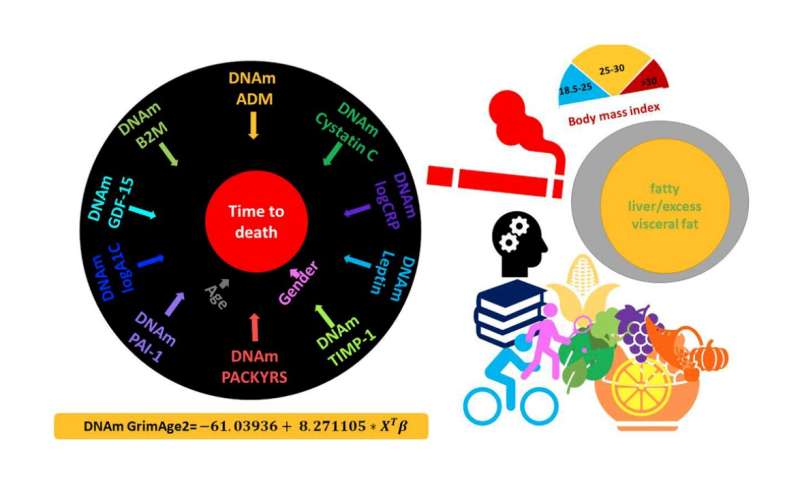
A new research paper was published in Aging entitled “DNA methylation GrimAge version 2.”
Researchers previously described a DNA methylation (DNAm) based biomarker of human mortality risk, which they called DNAm GrimAge. In their current study, the researchers describe version 2 of GrimAge (trained on individuals aged between 40 and 92), which leverages two new DNAm based estimators of (log transformed) plasma proteins: high sensitivity C-reactive protein (logCRP) and hemoglobin A1C (logA1C).
“To arrive at version 2 of GrimAge, we developed two additional DNAm based surrogates for plasma proteins that are widely used in the clinic (DNAm logCRP and DNAm logA1C),” they write.
The team evaluated GrimAge2 in 13,399 blood samples across nine study cohorts. After adjustment for age and sex, GrimAge2 outperforms GrimAge in predicting mortality across multiple racial/ethnic groups (meta P=3.6×10-167 versus P=2.6×10-144) and in terms of associations with age related conditions such as coronary heart disease, lung function measurement FEV1 (correlation= -0.31, P=1.1×10-136), computed tomography based measurements of fatty liver disease.
The researchers presented evidence that GrimAge version 2 also applies to younger individuals and to saliva samples where it tracks markers of metabolic syndrome.
DNAm logCRP is positively correlated with morbidity count (P=1.3×10-54). DNAm logA1C is highly associated with type 2 diabetes (P=5.8×10-155). DNAm PAI-1 outperforms the other age-adjusted DNAm biomarkers including GrimAge2 in correlating with triglyceride (cor=0.34, P=9.6×10-267) and visceral fat (cor=0.41, P=4.7×10-41). Overall, the team demonstrated that GrimAge version 2 is an attractive epigenetic biomarker of human mortality and morbidity risk.
Source: Read Full Article






